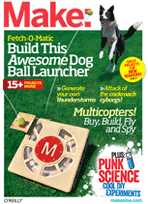

Seated on the Aar River, Solothurn calls itself Switzerland’s most beautiful baroque city. So naturally, when multitalented California artist Tramaine de Senna was offered a residency there, she was inspired to create works that are a twisted tribute to this elaborate style.
 In her studio overlooking the Aar, de Senna buttoned up her lab coat, donned her latex gloves and face mask, and spent the next three full months clocking about 800 hours working on her “I Love Caulk Frosting” series. Duality and reappropriation of mundane materials are central themes in much of de Senna’s work, and industrial caulk fits both bills, visually resembling tasty sugar frosting but most often toxic in content. The 16 total works range in size from a triptych titled Santa Claus, Schmutzli and Satan totaling roughly 9′ tall by 6′ wide (which took 216 ounces of caulk), to nine small squares, like Snow Queen, measuring about 7″ by 7″.
In her studio overlooking the Aar, de Senna buttoned up her lab coat, donned her latex gloves and face mask, and spent the next three full months clocking about 800 hours working on her “I Love Caulk Frosting” series. Duality and reappropriation of mundane materials are central themes in much of de Senna’s work, and industrial caulk fits both bills, visually resembling tasty sugar frosting but most often toxic in content. The 16 total works range in size from a triptych titled Santa Claus, Schmutzli and Satan totaling roughly 9′ tall by 6′ wide (which took 216 ounces of caulk), to nine small squares, like Snow Queen, measuring about 7″ by 7″.
De Senna’s process was straightforward but laborious. She began by drafting traditional baroque patterns on transparent film, then infusing them with benign images ranging from pretzels to pine trees, randomly interspersed with unexpected dark counterparts like skulls, mudflap girls, and exploding-head squirrels. Starting with canvases coated with a layer of gesso topped with a layer of caulk, she projected the patterns onto the canvases, then painstakingly caulked the designs in place with a manual caulking gun.
She used silicone for most pieces, preferring its flexiblity after hardening and easy cleanup. She used painted acrylic caulk for Laudrée Royale, since green caulk is hard to find, and for Swiss Milk Chocolate Delight because acrylic brown looked more “chocolatey.” Who knew caulk came in so many flavors?
Check out this video de Senna made of her process:

From the pages of MAKE Volume 31:

ADVERTISEMENT








